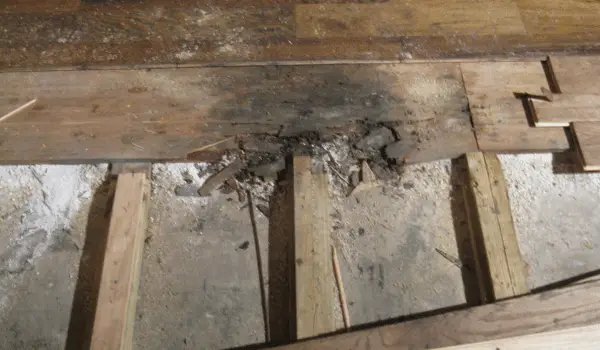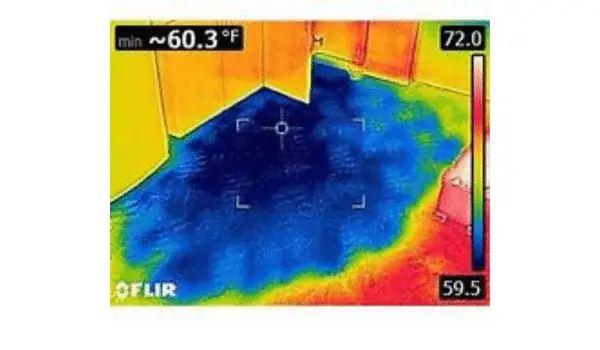As an experienced homeowner who has dealt with water damage issues in the past, I understand the concerns and challenges that arise when calculating the cost of water damage restoration.
Whether you are a first-time homeowner assessing repair costs, a real estate rental property owner, or someone in the process of buying a home that may have water damage, it’s essential to have a clear understanding of the expenses involved. In this guide, I will provide you with valuable insights into the cost factors and considerations related to water damage restoration.
Average Water Damage Restoration Costs
On average, water damage restoration costs around $2000 – $2500 , with prices ranging as high as $4,500. The cost breakdown typically falls within the range of $3.8 to $7 per square foot, depending on the type of water damage and the extent of the affected area.
Here’s a breakdown of water damage restoration costs:
- National average cost: $2500
- Average cost range: $1000-$3500
- High-end cost: $4500
Please note that the total cost for water removal, drying, and restoration can vary depending on various factors such as the size of the affected area, the need for mold remediation, and the average cost of labor in your specific location. To get a more accurate cost estimate, it’s advisable to contact a local professional experienced in water damage restoration.

Water Damage Restoration Cost per Square Foot
The cost of water damage restoration and cleanup varies based on the square footage of the affected area. According to National Flood Services, the average price per square foot is as follows:
- Category 1 clean water: $3.8/sq. ft.
- Category 2 gray water: $4.50/sq. ft.
- Category 3 black water: $7/sq. ft.
To provide you with an estimation of the costs, here’s a breakdown based on different square footage ranges:
- 50 sq. ft.: $188-$370
- 100 sq. ft.: $380-$720
- 150 sq. ft.: $560-$1100
- 200 sq. ft.: $750-$1500
- 300 sq. ft.: $1125-$2100
- 400 sq. ft.: $1500-$2800
- 500 sq. ft.: $1880-$3500
Water Damage Repair Costs
Water damage restoration typically involves several common tasks, including the replacement of drywall on walls and ceilings and intensive carpet cleaning. Here are estimated costs associated with specific areas in your home:
- Sheetrock: $5-$8 per square foot
- Drywall: $1.50 per square foot
- Ceiling: $500-$1100
- Carpets: $150 to $500 per room (plus $1/sq. ft.)
For instance, if you need to replace sheetrock, the cost would range between $5 and $8 per square foot, while installing new drywall would cost around $1.50 per square foot. Repairing a ceiling, which may be stained, soggy, or sagging, usually falls between $550 and $1200.
Carpet cleaning professionals can extract water and thoroughly clean the carpet, with prices ranging from $150 to $500 per room, and additional costs of less than $1 per square foot.
To estimate the cost of replacing specific areas in your home after water damage, refer to additional resources or consult with a professional.
Factors Affecting Water Damage Cleanup Costs

Several factors impact the overall cost of water damage restoration. Understanding these factors can help you calculate the expenses more accurately. Here are the key considerations:
Type of Water

The type of water that caused the damage plays a significant role in determining the cleanup costs. There are three categories:
- Clean water: This type of water comes from sources like leaky pipes, rain, or condensation. It is relatively safe and less expensive to clean up since it usually doesn’t contain harmful bacteria.
- Gray water: Gray water is slightly dirty water that may originate from appliances such as dishwashers, washing machines, or toilets. It requires additional safety measures during cleanup, leading to higher costs compared to clean water.
- Black water: Black water is the most expensive to clean up. It results from sewage backups or major flooding from external sources like rivers or lakes. Black water often contains harmful bacteria and other contaminants, necessitating thorough disinfection and specialized cleanup procedures.
Extent of Damage
The extent of the damage is another crucial factor influencing the cost of restoration. If the water has damaged drywall, ceilings, baseboards, or flooring, these elements may need to be removed and rebuilt, increasing the overall expenses.
Mold Remediation
If moisture has caused mold growth, it is essential to engage a professional mold removal company to address this issue. Mold remediation costs will depend on the extent of the infestation, its location within your home, and other relevant factors.
Additional Repairs
In addition to water damage restoration, you may need to consider the cost of painting, replacing fixtures, or performing other necessary repairs. These costs should be factored into the overall restoration budget.
Square Footage
The size of the affected area is a significant factor in determining the cost. Larger areas will require more time and resources for the drying process. By using the average cost per square foot specific to your location, you can estimate the total expense of water damage repair work.
Water Damage Causes and Associated Dangers

Water damage in your home can stem from various sources, ranging from minor leaks to major flooding. It’s important to be aware of these potential causes and take appropriate preventive measures. Some common sources include:
- Clean water sources: Rain, overflowing bathtubs or sinks, melting snow or ice, or leaking water pipes.
- Gray water sources: Leaking appliances like washing machines or dishwashers, toilets, or sump pump failures.
- Black water sources: Contaminated water entering your home, such as from sewer backups or floodwater from rivers and streams.
Water damage poses several risks that need to be addressed promptly. Even clean water, if left unattended, can develop contaminants harmful to human health. Both gray and black water may contain bacteria and other organic materials that could be hazardous. Additionally, untreated water can lead to mold growth, which should be promptly removed and cleaned by professionals to avoid potential health issues.
Preventive Measures to Minimize Water Damage

While it may not be possible to prevent major floods entirely, there are cost-effective steps you can take to minimize the risk of water damage in your home. Consider the following measures:
- Ensure that external water drains are properly directed away from your house.
- Apply water sealant to any cracks in the basement walls or floors to prevent basement flooding.
- Reseal showers or tubs with old caulking to prevent water leakage.
- Regularly inspect water hoses connected to appliances.
- Check heating and plumbing pipes for leaks or cracks.
- Keep gutters clean and ensure downspouts direct water away from your house.
- Caulk around windows and doors to prevent water seepage.
- Inspect your attic and roof for visible signs of leaks.
- Familiarize yourself with the location of the main water shut-off valve in case of a burst pipe.
If you live in an area prone to heavy rains or floods, consider additional home projects such as
waterproofing your basement, installing a sump pump, getting a roof inspection, and having your plumbing inspected. These proactive steps can help safeguard your home and minimize the risk of water damage.
To ensure proper maintenance and prevention of severe water damage, it is advisable to hire a team of professionals who can inspect different areas of your home, perform necessary cleaning, and carry out any required repairs.
Hiring a Water Damage Restoration Service
When selecting a water damage restoration service, it’s important to research and find reputable professionals in your area. Here are some steps to follow:
- Look up local water damage repair services and review their profiles for credentials and client testimonials. Online platforms like Thumbtack can provide a comprehensive list of service providers.
- Compare multiple companies in your area to identify those that meet your requirements.
- Reach out to the selected companies and request cost estimates. Provide them with detailed information about the visible damage and its source, and share pictures if possible to receive a more accurate price quote.
- Verify if the water damage restoration companies near you have Inspection, Cleaning, and Restoration Certification (IICRC). This certification ensures that the professionals follow specific guidelines and safety measures.
By following these steps, you can choose a reliable water damage restoration service that suits your needs and budget.

Homeowners Insurance Coverage for Water Damage
Review your homeowner’s insurance policy to determine the extent of coverage for water damage. In general, homeowners insurance typically covers water damage caused by burst pipes, rainfall, or ice on the roof. Some policies may also provide coverage for drain and sewer backups. It is crucial to understand the specific terms and limitations of your insurance policy regarding water damage.
Cost of Repairing Water-Damaged Drywall

Repairing water-damaged drywall can range in cost depending on the extent of the damage. Expect to pay anywhere from $80 to $1100 for repairing drywall. If the damage is severe and requires the installation of new drywall, the cost can range from $100 to $5000. Factors influencing the cost include the size of the affected room, the extent of repairs needed, and whether the drywall needs to be replaced entirely.
Importance of Promptly Addressing Water Damage
It is crucial to address water damage promptly to prevent further complications and increased costs. Even small leaks can escalate into major problems if left unattended. Water damage can affect not only visible elements like ceilings and drywall but also the structural integrity of your home. Additionally, untreated water damage can lead to mold growth, which may require additional expenses for proper remediation.
Mold Removal Costs
The cost of mold removal varies depending on factors such as the size of the infestation and its location within your home. Costs can range from less than a hundred dollars to several thousand dollars. It is advisable to contact a professional mold removal company to assess the extent of the infestation and provide an accurate cost estimate.
By considering these factors and understanding the importance of addressing water damage promptly, you can make informed decisions and effectively manage the costs associated with water damage restoration.
